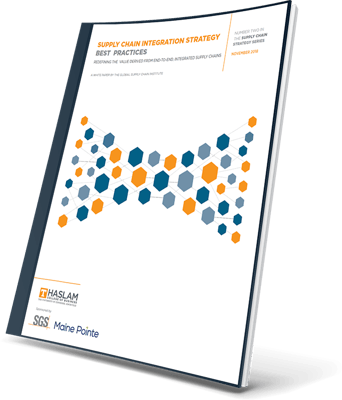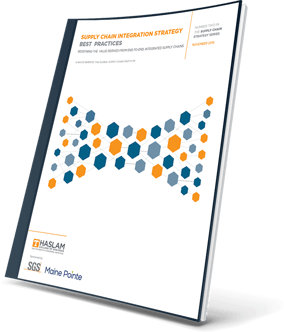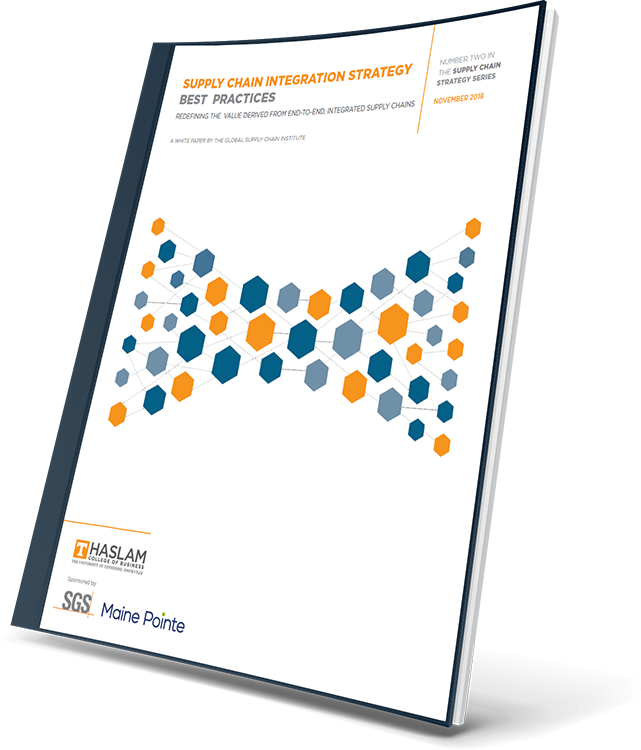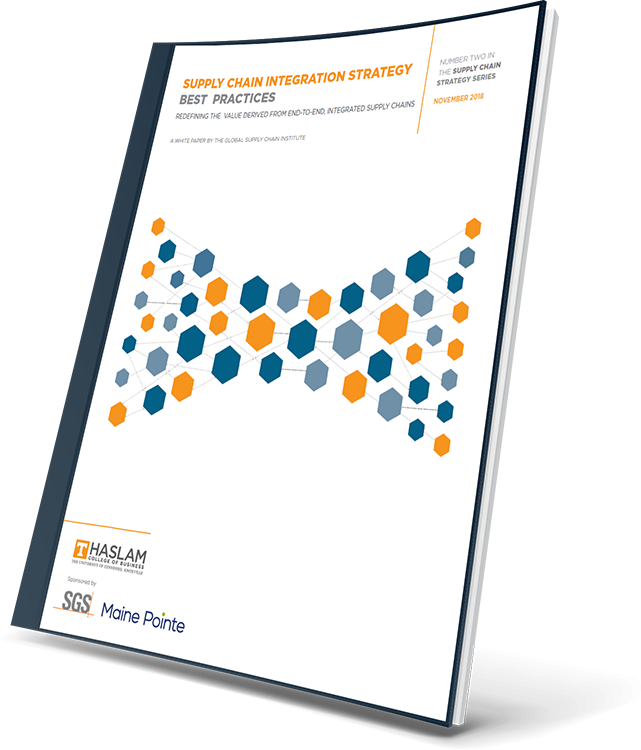
Supply Chain Integration Strategy Best Practices
This research white paper by the Global Supply Chain Institute (GSCI), sponsored by Maine Pointe, redefines end-to-end integration of the supply chain using a more robust and data-driven approach. The paper tackles the critical issue of supply chain integration: what it is, why it’s important and how your company can achieve it.
eBook: Supply Chain Integration Strategy Best Practices
A research white paper by the Global Supply Chain Institute, sponsored by Maine Pointe


What's in this eBook?
Find out how leading firms are expanding their knowledge and capability through detailed integration of their end-to-end supply chain(s)
Discover the eight best practices that increase value creation across the supply chain
Gain insight on the supply chain leader’s role in creating a culture that supports integration
Introduction
Business thinking in the post-World War II industrialized world was rooted in the idea of mass production. For example, at the end of World War II, there were only eight shopping centers in the US. By 1960, there were 3,840.
Filling those shopping centers with consumer products required manufacturing processes that created large quantities of low-cost, standardized goods. Efficiency and scale ruled the day. Companies invested heavily in dedicated machinery operated by a semi-skilled labor force and watched for opportunities to vertically integrate. But by the late 1970s, the game had changed.
Market saturation had diminished the growth potential of mass production in many sectors. Instead of increasing output, companies suddenly found themselves needing to increase productivity and innovation. Vertical integration gave way to outsourcing and a focus on core capabilities.
Consider just one example: Boeing introduced its mid-sized 707 in 1958. At the time, only about 2 percent of aircraft production occurred outside the US. But by the 1990s, competition from other manufacturers had begun to erode Boeing’s market share.
The company turned to outsourcing as a way to lower costs and speed production. When Boeing rolled out its new 787 Dreamliner in 2007, 90 percent of value added occurred outside the US. The company’s vision of itself had shifted over that time period as well, from an aircraft manufacturer to a “systems integrator.”
But there were risks involved. Supplier quality problems 6 introduction managing risk in the global supply chain 9 When Boeing rolled out its new 787 Dreamliner in 2007, 90 percent of value added occurred outside the US.
The company’s vision of itself had shifted over that time period as well, from an aircraft manufacturer to a “systems integrator”. and time delays hobbled production, causing the Dreamliner to run three years over schedule and billions of dollars over budget.3 It was not until Boeing took a more strategic approach to integrated outsourcing, focusing on total value rather than simple cost reduction, that the Dreamliner project got back on track.
Supply Chain Integration Strategy Best Practices

